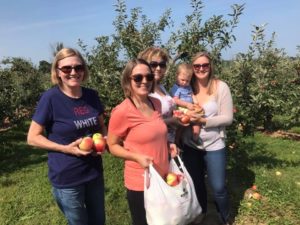The population of the United States is aging, and the aging population is growing at an unprecedented rate. Since 1990, the percent of Americans over the age of 65 has tripled, and the trend is not slowing down! In the next few decades, the number of Americans over the age of 65 is projected to double again, from 46 million in 2016 to over 98 million in 2060.
As such, many families look different today than they did a few decades back. Increasingly, multiple generations reside under the same roof. Additionally, as people live longer, more inter-generational contact takes place. Grandparents live to watch their grandchildren grow, and children become caregivers for their parents.

Inter-generational relationships can be challenging to navigate, but can they can also be rewarding. As children learn how to relate to older adults, and vice versa, individuals may benefit by experiencing:
- Opportunities to learn new skills
- Opportunities to share life experience and mentor one another
- Reduced fear of aging and the elderly
- Reduced feelings of depression and isolation
Brubacker and Brubacker argue that inter-generational relationships are marked by respect, responsibility, reciprocity and resilience. As children grow within multi-generational families, they:
- Develop respect for their parents and grandparents
- Take on responsibility out of the desire and/or obligation to care for elders
- Learn to give back to those who have given to them
- Contribute to building a rich support system for the benefit of all generations
If you live in a multi-generational household, take time today to reflect on the benefits reaped by the inter-generational contact you experience on a daily basis. If you live in alone or in a nuclear household, take time to consider the people you cross paths with on a regular basis. How could you be intentional about fostering inter-generational relationships in your daily life for the benefit of all? Share your ideas in the comment box below!

